General Membership Dinner and Meeting
Wednesday, May 21, 2014
Speaker: Tom Zlotkowski, PE
Executive Director
Capital SouthEast Connector JPA
Wednesday, May 21, 2014
Speaker: Tom Zlotkowski, PE
Executive Director
Capital SouthEast Connector JPA
In our last article we introduced the California Land Surveyors Association (CLSA) Central Valley Construction Committee. We gave some background on the committee, described its goals, listed its recently completed work, and talked about its current work-in-progress. In this article we will introduce the concept of “level of control” for digital design files discussed in one of the Committee’s first preliminary standards.
“Level of Control” For Digital Design Files
How is “level of control” as it relates to digital design files used during construction defined?
On many project’s today the design team will provide the contractor or another third party involved in the construction of a project digital design files. Typically these files are provided “as-is” and the contractor or third party assumes all the risk in their use. In this scenario, the approved hard copy plans “control” construction. This means that the information shown on the hard copy plans will control over information contained in the CAD files. This is likely the model the industry will continue to operate under for the foreseeable future. However, this model is not likely sustainable over the long run. As more projects are built using digital design files, the files (and their quality) will become more important than information shown in the hard copy plans.
“Level of Control” has three (3) elements:
1. Control: The first element addresses the relationship between the hard copy plans and the digital design files provided to the contractor. In the event of a conflict between the hard copy plans and the digital design files, which will control construction? Will errors in the digital design files be treated with the same seriousness as errors in the hard copy plans? Will it be considered an error if the hard copy plans are missing information contained in the digital design files? Will it be considered an error if the digital design files are missing information contained in the hard copy plans?
2. Intended Use: What is the intended use of the digital design files provided to the contractor. Are they provided “as-is” with no intent to control construction? Are they provided as an aid to construction? Are they provided to control construction? Does the control of the digital design files apply to only a portion of the project, or are they intended to guide construction on all phases of the project?
3. Support: What level of support will be given by the design team for the digital design files during construction? What process will be followed to resolve conflicts between digital design files or between the hard copy plans and the digital design files? Will the design team have a responsibility to provide corrected and updated digital design files during construction? Will the design team be required to provide final digital design files that reflect the project improvements as actually constructed?
Possible Levels of Control
There are a few different levels of control that we can reasonably expect will be provided for digital design files moving into the future. They are listed below in ascending order of control. In Level 1 the digital design files have the least amount of control. In Level 5 they have the most amount of control.
Level 1:
Level 2:
Level 3:
Level 4:
Level 5:


Established in 1992, Quincy Engineering, Inc. is a multi-disciplinary consulting firm specializing in transportation, bridge, and water/wastewater analysis and design engineering; surveying; and construction management and inspection services. They provide their consulting services to a wide variety of clients that include cities and counties; California, Oregon, and Nevada state departments of transportation; regional transportation councils, associations and agencies; and private developers. Having collectively worked on over 750 transportation projects (which include 270 bridges – 250 that were funded through the Highway Bridge Program (HBP) – more than any other consulting firm), Quincy’s staff has garnered extensive experience and an in-depth knowledge of State and Federal Agency process and procedures.
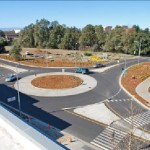
Headquartered in Rancho Cordova (with offices in Roseville, Walnut Creek, Pleasanton, and Salem, Oregon), Quincy is a dynamic firm with 68 employees, of which 41 are California licensed engineers/surveyors. This deep bench of professional civil, bridge, and construction engineers can be rallied to immediately provide services for your work orders. Their highly qualified staff has direct experience in the types of transportation projects typically found in Local Agencies; especially those that are state or federally funded. Quincy’s experience assisting Local Agencies (during the design phase) with funding issues has resulted in the successful identification and procurement of funding sources that have enabled these Local Agencies to fund and complete the construction of their projects. In the 2010/2011 programming cycle, Quincy assisted over 13 different agencies in obtaining nearly $100 Million in funding for their HBP projects.
The firm’s management structure includes eight Principals; all of whom serve as Project Managers! This ‘hands-on’ management approach by the principals/owners results in a company core value that is client/project oriented. Hence, their motto:
“developing YOUR vision delivering YOUR project”.
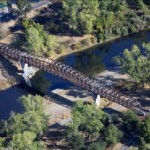
Quincy Engineering, Inc. is dedicated to providing clients with the delivery of innovative and quality products and to exceed expectations for responsive personal attention to ensure the success of each and every project.
Contact:
Mr. John Quincy, PE, President
Quincy Engineering, Inc.
11017 Cobblerock Drive, Suite 100
Rancho Cordova, CA 95670
916.368.9181
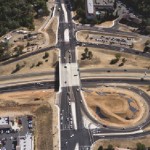
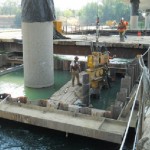
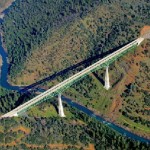
For the March 21st ACEC-CA meeting at Haggin Oaks, Mr. Pete Ghelfi, a Director of Engineering of the Sacramento Area Flood Control Agency (SAFCA), provided an update on flood control improvements in the Sacramento area. He reviewed:
In conclusion, Mr. Ghelfi discussed the cost of achieving a 200-year level of flood protection for the Sacramento area being estimated at approximately $4 billion and that a little more than $1.5 billion has been spent to-date.
The March Meeting also held the honored distinction of being our second successful golf event, following a lunch program. Great weather, fine company and a beautiful golf course all made for a great afternoon!
The ACEC-CA Sierra Chapter again donated $1,500.00 and hosted a booth at the Annual Sacramento Regional Science & Engineering Fair that took place on Friday and Saturday, March 21st and 22nd at Rosemont High School in Sacramento.
This annual event includes emerging scientists and engineers from Sacramento, El Dorado, Placer, San Joaquin, Yolo, Yuba, Sutter, Solano, and Amador Counties. Many of these impressive young students are our future engineers, scientists, technology experts, and mathematicians.
This regional competition showcases achievement by middle and high school students, supported by devoted parents, teachers, sponsors, mentors, and members of the public. Top winners of the nearly 400 student participants advance to the California State Science Fair, and the Intel International Science and Engineering Fair.
The Sierra Chapter Directors are pleased to be able to continue to lend our support to our regions youth. Director Kelly Birkes, with Rick Engineering Company, manned the ACEC both and fielded questions from these inquisitive emerging engineers and scientists.
MSE GeoChallenge is a student run design competition in which a model retaining wall is fabricated using paper sheets. This wall is designed to hold back a series of different loading scenarios including a dynamic load to simulate earthquakes. The team will provide a short presentation at the start of our April meeting.